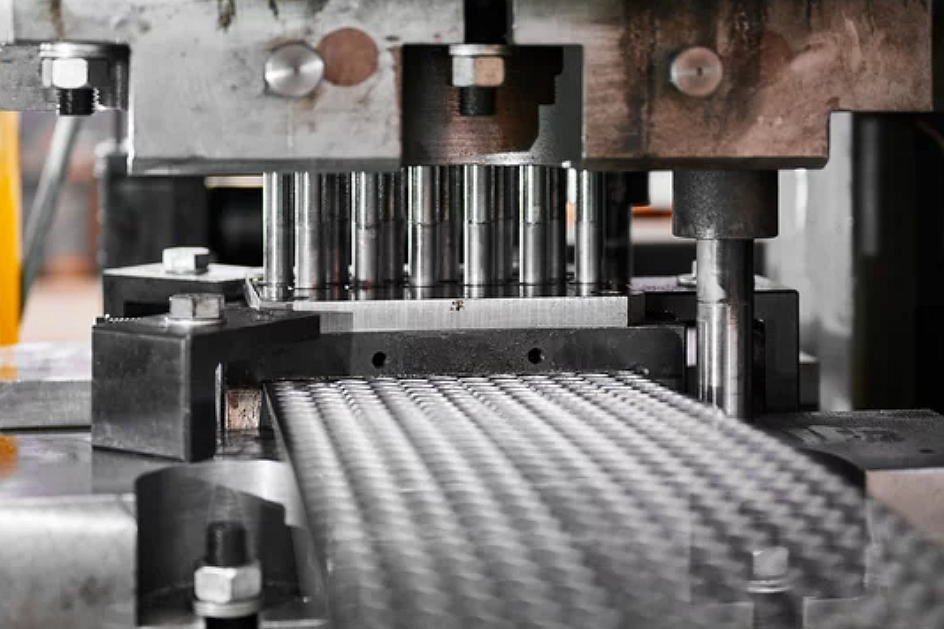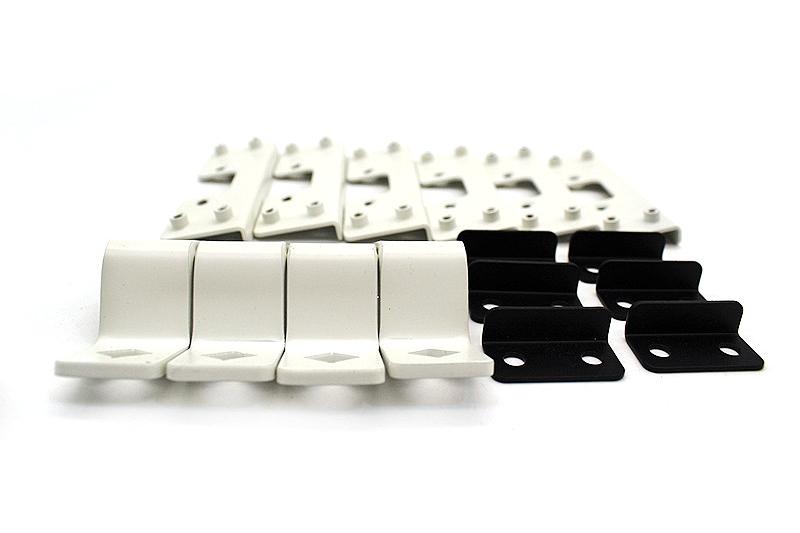13 Mechanical Design Considerations for Metal Stamping Parts
The metal stamping process is a versatile manufacturing process used to produce high volumes of custom metal parts efficiently and cost-effectively. However, to reap the benefits of metal stamping services, the parts must be designed properly with stamping in mind. Here we will discuss the critical mechanical design principles and considerations for designing parts for metal stamping.

Material Selection
The material used for metal stamping significantly impacts the part design. Ductile materials like low-carbon steel, stainless steel, aluminum, and brass are commonly stamped. Sheet thickness typically ranges from 0.5mm to 3mm for most stampings. Thicker materials up to 6mm can be stamped in some cases.
When selecting the material, consider factors like:
- Strength and hardness required
- Corrosion resistance needed
- Magnetic properties
- Weight and density
- Formability and ability to bend without fracturing
- Cost and availability
Understanding the formability, flexibility, and bending behavior of the material selected is crucial in the design stage. Consulting early with the Neway stamping engineer on material selection is recommended.
Wall Thickness and Tolerances
Uniform wall thickness, in part, produces the most consistent stampings. Thickness variations will increase scrap rates and make parts more prone to fracturing during stamping.
For most low-carbon steels, a wall thickness tolerance of ±0.1 mm is readily achievable for stampings. Tighter tolerances down to ±0.05mm are possible but may require additional process controls.
Accounting for Springback
Springback is the elastic recovery of metal after forming and is influenced by material grade, hardness, part geometry, and grain orientation. The amount of spring back must be compensated for in die design by overbending the part.
The inside bend radius is the most critical factor for controlling spring back. Minimum bend radii ratios relative to material thickness are common:
- Aluminum alloys - 1:1
- Low carbon steel - 0.5:1
- Stainless steel - 1:1
Draft Angles and Clearances
Sufficient draft angles must be designed into the part geometry for proper die clearance and part release. Standard draft angle requirements are:
- Low carbon steel - 2-3° draft per side
- Stainless steel - 4-6° per side
- Aluminum alloys - 3-5° per side
Deeper draws need higher draft angles. A sufficient draft can lead to parts jamming in the die. Allowances should also be made for any coatings or plating that will increase part thickness.
Bend and Draw Radii
Controlling the inside bend radius is critical for achieving quality parts. Tighter radii increase strain hardening and the risk of cracking. Standard minimum inside bend radius guidance for metal stampings is:
- Low carbon steel - Thickness x 0.5
- Stainless steel - Thickness x 1
- Aluminum alloys - Thickness x 1
Deeper drawn parts require more generous radii at the maximum depth point. Using standard die radii will simplify the die design and construction. Radii are typically specified starting from the smallest standard size above the minimum and increasing in increments of 0.5mm or 1mm.
Holes, Slots, and Tolerances
The placement and design of any holes and slots in part must consider stamping process limitations.
For hole location accuracy, expected tolerances are:
- ±0.5mm when the hole is up to 150mm from the datum
- ±0.8mm for holes 150mm to 300mm from datum
Wide slot widths are preferred over long slot lengths to control positioning accuracy. Slot length should not exceed 3x width.
Hole and slot placement should avoid highly deformed stamping areas whenever possible. It helps maintain dimensional accuracy and reduces stress cracking around the holes. Generous fillet radii where holes meet internal angles further reduce stress.
Bridging and Webbing
Narrow strips of material between holes or wide spaces are prone to tearing or fracturing during stamping. Minimum web widths relative to material thickness should be:
- Low carbon steel - 8x material thickness
- Stainless steel - 10-12x thickness
- Aluminum - 14x thickness
Wider bridging should connect closed, isolated material islands to the surrounding main body areas. Using notched tabs instead of solid bridging is another strategy to improve material flow.
Stamped Protrusions and Louvers
Protruding flanges, bosses, attachment points, and louvers must be generously rounded and smoothly blended into the base geometry. Otherwise, these areas will be prone to cracking or splitting during forming.
Minimum bend radius guidelines should be followed for small protrusions. More prominent protrusions may require heavier gusseting at the base and gradual transitions into the surrounding walls.
Parting Lines
Stamping dies are designed to separate along parting lines to eject completed parts. Parts must be oriented to enable a single straight-line parting direction without any undercuts.
Constant and smooth surfaces should be maintained along the parting lines. Steps, gaps, and uneven surfaces will prevent proper die function. Any text or graphics on the part surface should also avoid the parting line area.
Stamped Inserts and Hardware
Attachments like threaded inserts, fasteners, and hinges may be added to stampings in secondary operations. Allowance should be made for hardware clearance, insertion points, and assembly access features.
Areas that will receive inserts should have sufficient local wall thickness. Holes for self-tapping screws require extra clearance diameter over thread size to account for material displacement.
Tooling Considerations
Stamping requires an initial tooling investment for die manufacture. Impact on tooling cost and lead time should be considered early when designing parts.
Designs that minimize required die operations, specialized machining, and extensive polishing or texturing will simplify tooling. Standard-size radii and minimal variation across bend geometries also keep tooling costs down.
Post Processing
Many stampings undergo additional processing like welding, PVD, powder coating, heat treatment, or assembly. Designs should accommodate the space needed for jigs and fixtures used in subsequent operations.
Plating or coating thickness can increase part dimensions. Tight tolerances may be difficult to maintain on coated parts, so tolerance should be allocated accordingly. DRAINAGE and access points are needed for liquids applied during plating or coating.
Early Collaboration with Stamping Partner
Validation with your stamping partner should occur early in the design process to avoid extensive redesigns. Companies experienced in stamping can assess formability, analyze critical transitions, and recommend modifications before tooling starts. This collaboration is vital for designing optimized, cost-effective parts that leverage the full capabilities of metal stamping.
Summary
Well-designed stampings take full advantage of the process while minimizing manufacturing issues like cracking, spring back, and dimensional errors. Major considerations include:
- Material selection and properties
- Wall thickness uniformity
- Inside bend radii and draft angles
- Draw depths and clearances
- Hole and slot placement
- Bridging, webbing, and hardware allowances
- Parting line and surface quality
- Tooling complexity impact
- Secondary processing requirements
Incorporating these best practices and others will result in stamping designs with reduced lead times, improved quality, and lower overall costs. Effective early collaboration between designers and experienced stamping partners makes designing for stamping more straightforward. With the right design approach, metal stamping provides a fast, reliable way to produce complex and durable custom metal parts at scale.
Neway Custom Stamping Service
Get It Done Right with Neway Metal Fabrication
For over 30 years, Neway has offered a full range of precision sheet metal fabrication services. Their capabilities include laser cutting, plasma cutting, stamping, bending, welding, and assembly. Neway's decades of experience and end-to-end services ensure you get high-quality custom metal parts. An added benefit is their free sample parts for design validation before your entire production run. For expert metal fabrication, you can trust, choose Neway.



